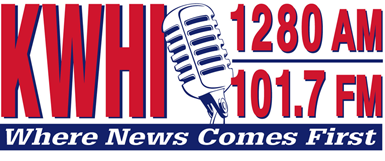BRENHAM RESIDENTS, COUNCILMEMBERS RECEIVE WEALTH OF INFO ON TAX REINVESTMENT ZONE
Curious Brenham officials and citizens heard from consultants on the city’s proposed Tax Increment Reinvestment Zone (TIRZ) at Thursday’s City Council meeting.

Trent Petty, a consultant for Petty and Associates based out of Keller, Texas, presented the preliminary project and financing plan for the TIRZ. Petty explained the zone is a project several cities in Texas use to create economic development.
The TIRZ looks to allow the City of Brenham to use new development taxes, which are generated within a specific zone based around city limits, for investment opportunities.
These dollars would be put in a special fund, much like a savings account, to be used for expenses in the city’s project plan.
Petty stressed that citizens should not see any new costs, and there would not be any impact to homeowners or businesses. He said, whether someone is in the zone or not, their taxes will remain the same. If the city ever decides to increase or decrease taxes, every property owner will pay that change, regardless of if they are in the zone.

In this preliminary plan, the city is keeping 50 percent of these new growth funds in its operating fund, while putting the other half in the TIRZ fund. The city would collect these funds for 30 years, and would use them to pay for development projects.
Petty said staff have put together about $31 million in anticipation of new projects, but that may change depending on what the final project and finance plan outlines.
Some of these projects the city is expecting to fund over the next 30 years include improvements to parking downtown, the Brenham Family Park, building of a second fire station, and a downtown hotel.
Upon creation of the TIRZ, the city expects to have enough in the fund by 2024, to enhance downtown parking for $1 million. By 2028, the city would look to make downtown health and safety improvements for $2 million.
From there, the city would look to save funds until 2042, when it looks to create a downtown hotel and parking for it, for $15 million. With the new economic development, the city would only have to wait until 2044 until it had enough to build a second fire station for $3.1 million. Following in 2046, the city would plan on creation of a family park, estimated at $5 million. At the end of the 30-year timeline, in 2048, the city plans to extend Blue Bell Boulevard from James Nutt Boulevard to State Highway 36, as well as Chappell Hill Road to Blue Bell Road.
Petty noted that the city is not obligated to pay for any of the projects listed in the plan, unless the dollars are in the fund. A TIRZ board will decide which projects are funded and when, based on what funds are available. City council members will sit on the board once it is created.
Future meetings will be held with other local taxing entities to determine if they want to participate, and they will be represented on the board if they do. Other entities would participate the same way the city would.

Petty said that consultants put the TIRZ boundary together, presented the council with multiple options, and is allowing them to make adjustments. The boundary focuses on downtown, as well as major corridors where the city is likely to experience growth.
The zone cannot include any more than 50 percent of appraised value, or 30 percent of existing residential area. Petty said the zone, as well as the project plan, can be amended before the final plan is adopted.
Consultants will look to meet again with the city council in January or February, to further discuss the final project and finance plan.
The council will issue second reading of the TIRZ at a meeting next Thursday.



Thanks for the clarifications. So more-or-less this amounts to earmarking a portion of the tax dollars collected from specific areas to be used only for development within those areas?
Exactly. And it’s just 50% of the additional tab money generated when property values increase. The other 50% goes into the general fund.
Sounds like a good idea; thanks for the additional information.